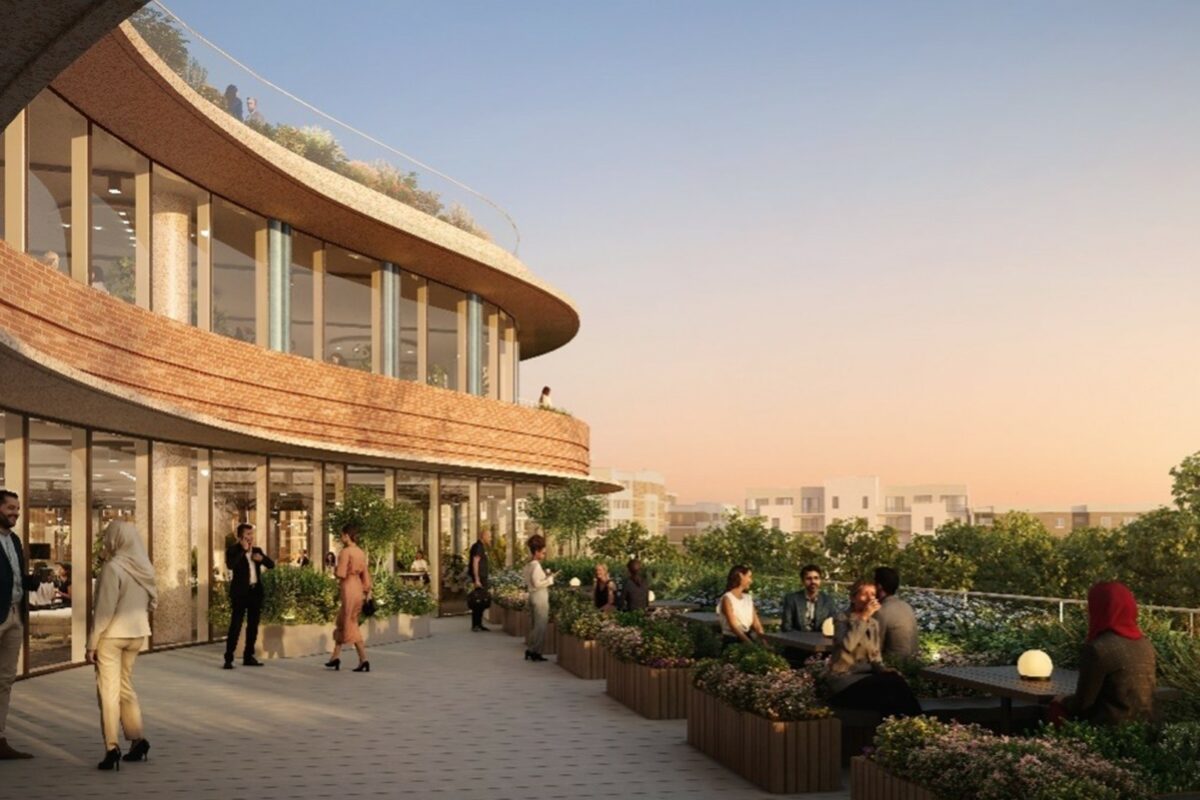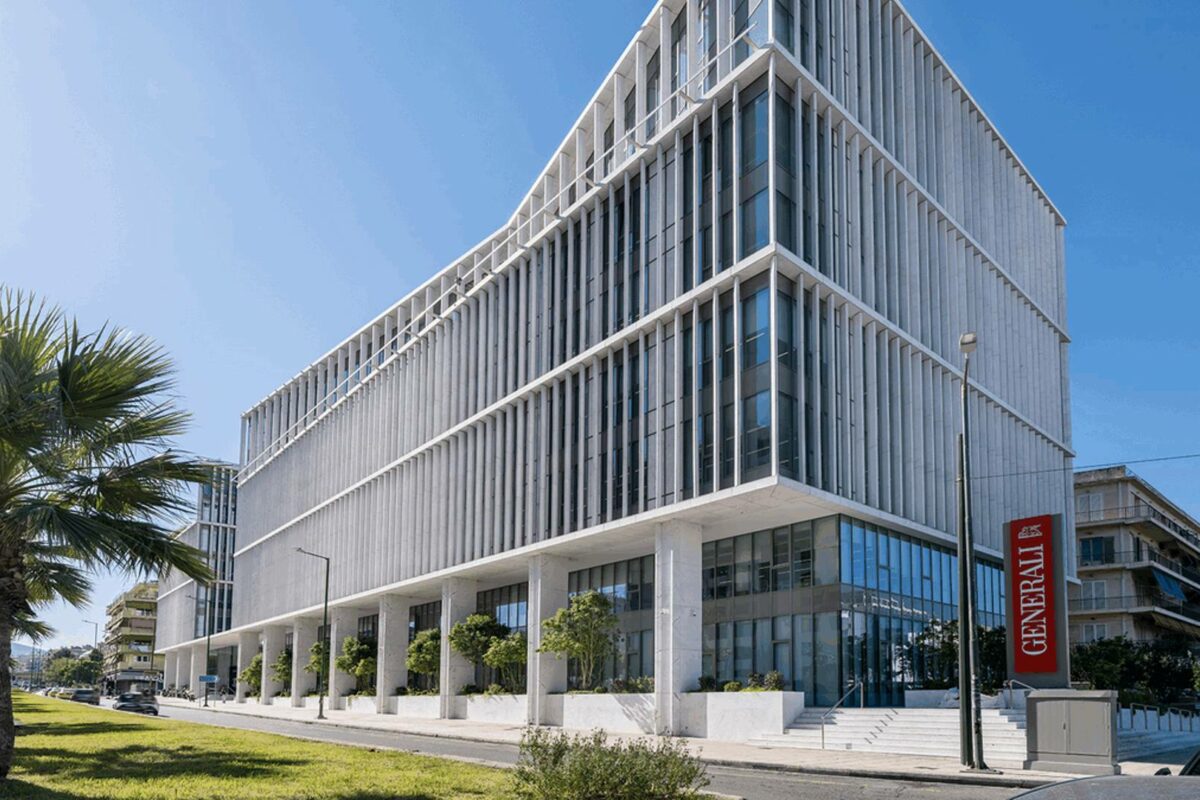Innovative architecture, the use of advanced technology and building materials free of the most harmful chemicals, and connection to an efficient, flexible district energy system have come together to create one of the most sustainable, and energy-efficient laboratories in the world.
Harvard University’s Science and Engineering Complex (SEC) is an eight-storey, 544,000-square-foot complex will, it is hoped help Harvard progress toward its Sustainability Plan and achieve its goals to be fossil fuel-neutral by 2026 and fossil fuel-free by 2050. Home to the Harvard John A. Paulson School of Engineering and Applied Sciences (SEAS), the building is a living laboratory for world-class, interdisciplinary research, learning, and innovation. The SEC is set to open its doors to students in the fall of 2021.
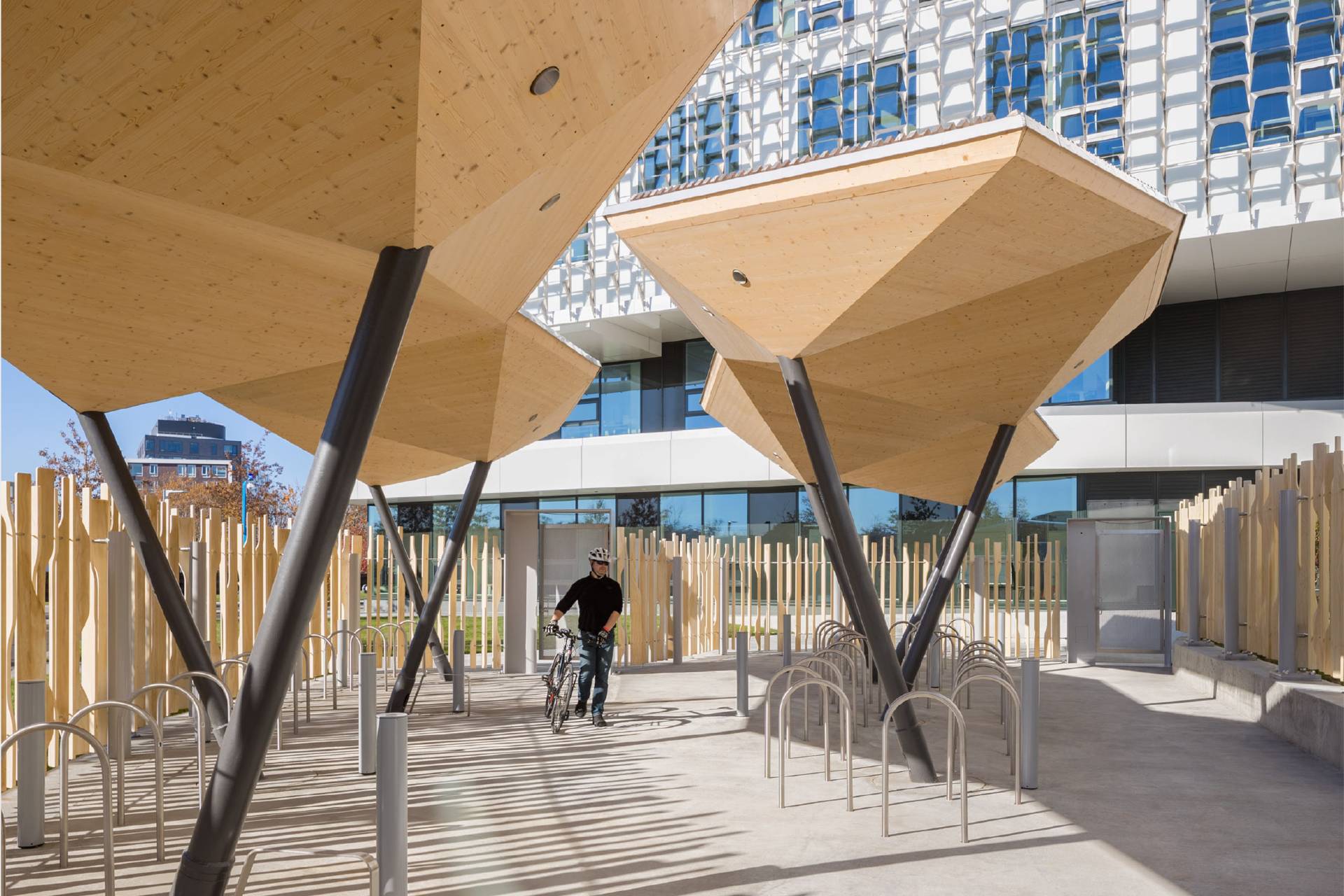
Transforming the market
Drawing on research by SEAS and other Harvard faculty and students linking harmful chemicals in building materials to cancer, immune suppression, diabetes, high cholesterol, obesity, thyroid diseases, and more, the University used the design and construction of the SEC to transform the marketplace for healthier building materials.
“The SEC is a centerpiece of the University’s mission to create a healthier, more sustainable campus,” said Katie Lapp, executive vice president. “Together, Harvard’s community and its partners — faculty, students, architects, sustainability experts, engineers, and manufacturers — are transforming the definition of sustainable building to address climate, health, and equity for all. Our shared vision for a healthier built environment has motivated the broader supply chain to support a healthier building at local, regional, and global levels.”
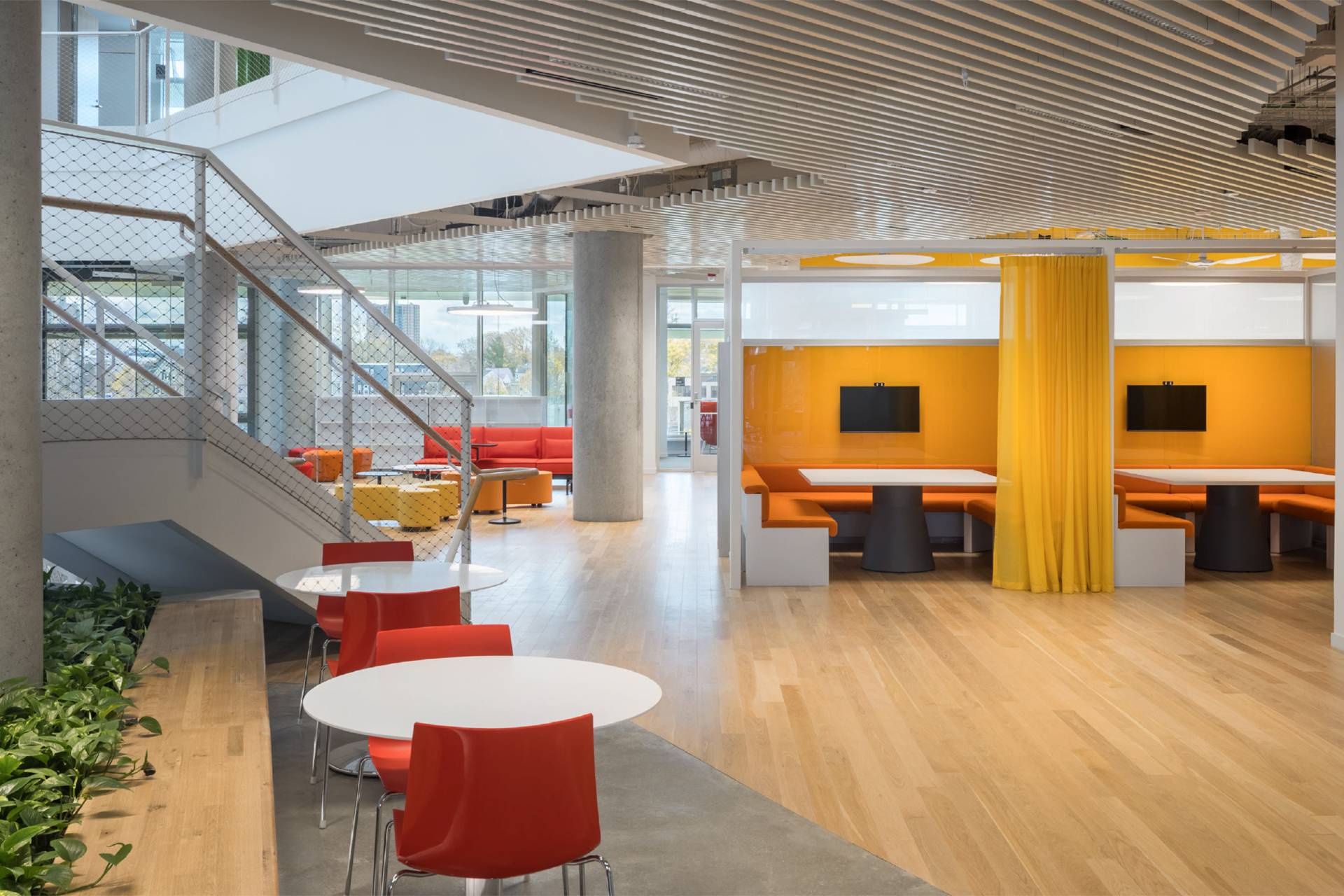
Harvard used the construction of the SEC to evaluate and test 6,033 building materials, ranging from wire coatings to furniture fabrics to lighting fixtures, and worked with manufacturers and designers to create safer global supply chains.
More than 1,200 companies publicly disclosed the ingredients in their products and created labels to help others make healthy decisions. Many manufacturers reformulated their products to remove harmful chemicals. Harvard eventually approved and selected more than 1,700 products that both comply with the Living Building Challenge Red List and meet the rigorous requirements of Harvard’s Healthier Building Academy, a partnership among faculty from SEAS, the Harvard T.H. Chan School of Public Health, Harvard Medical School, and the Harvard Office for Sustainability.
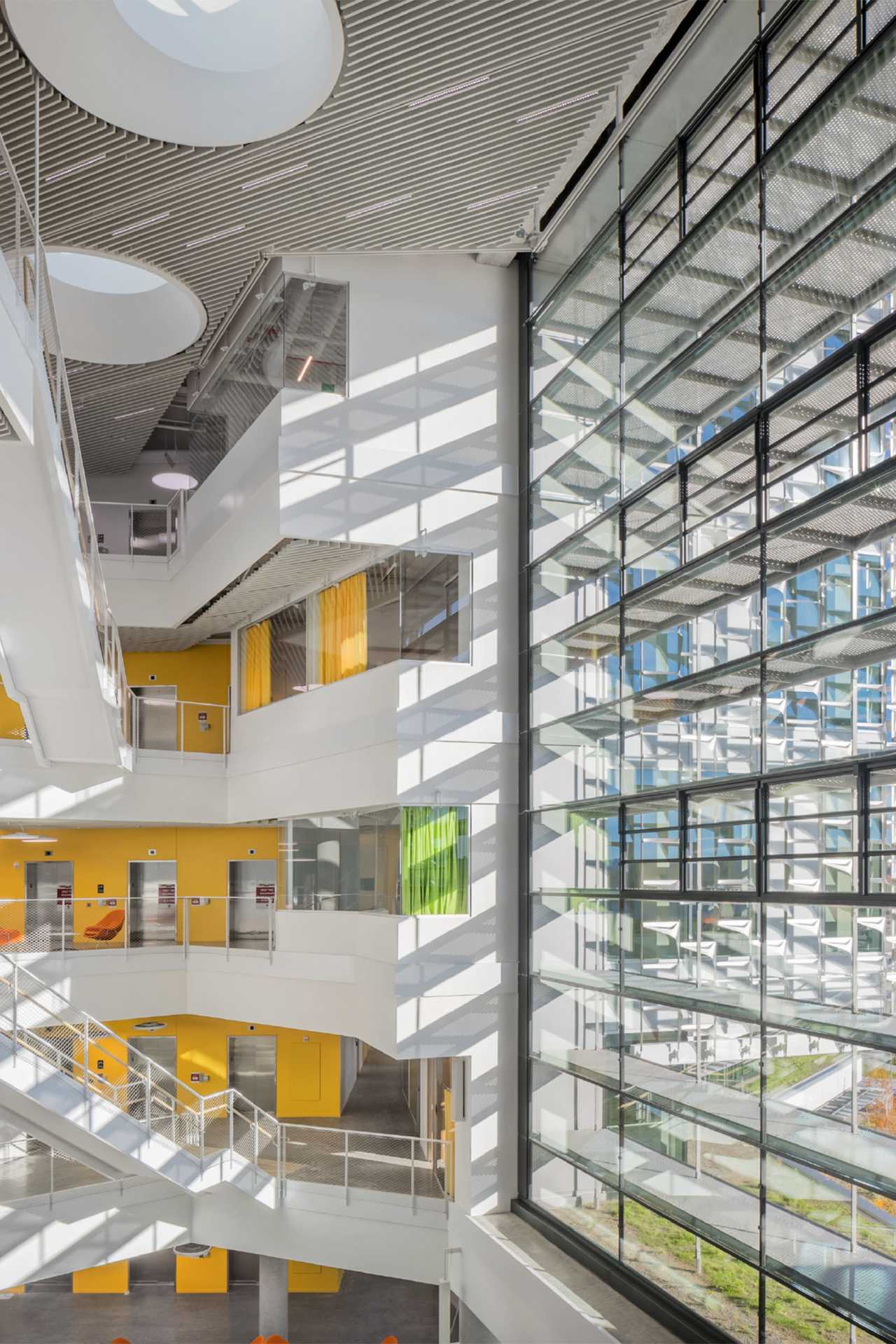
“We have shown that it is possible to minimize or eliminate toxic substances such as per- and polyfluoroalkyl substances, chemical flame retardants, and polyvinyl chloride (PVC) from new construction, making the building healthier for its occupants and creating safer conditions for workers involved in the manufacture of products,” said Elsie Sunderland, Gordon McKay Professor of Environmental Chemistry at SEAS, professor of environmental science and engineering at the Chan Health, and a Harvard Healthier Building Academy adviser. “In the SEC, you will encounter healthier products in the walls, floors, ceilings, lights, furniture, paints, composite wood, wire coatings, pipes, plumbing sealants, countertops, and even lab equipment.”
Energy efficient, too
Designed by Behnisch Architekten, the SEC also features high-performance, novel technologies to ensure energy efficiency. Integrated advanced solar shading strategies, adaptable ventilation methods, a high-performance heat-recovery system, and an energy-saving air-cascade system enhance the SEC’s energy performance while prioritising wellbeing.

Highest measure of sustainability
The SEC is the largest building and first wet laboratory building to achieve the International Living Future Institute’s Living Building Challenge Petal certification. That certification defines the highest measure of sustainability possible in the built environment based on the best current science, and holds organizations accountable to a very high standard while recognizing that true sustainability is an ongoing journey.
“At over 500,000 square feet, the SEC shows it’s possible to create healthy, sustainable buildings at any scale,” said Vivian Loftness, board member of the International Living Future Institute and Paul Mellon Chair and University Professor at Carnegie Mellon. “This project sends a strong signal to manufacturers about the importance of screening out hazardous chemicals from building products. The SEC shows that health and transparency are widely embraced goals.”

For more content on healthier building materials, click here.
Photos courtesy of Brad Feinknop
Content Team
Work in Mind is a content platform designed to give a voice to thinkers, businesses, journalists and regulatory bodies in the field of healthy buildings.



